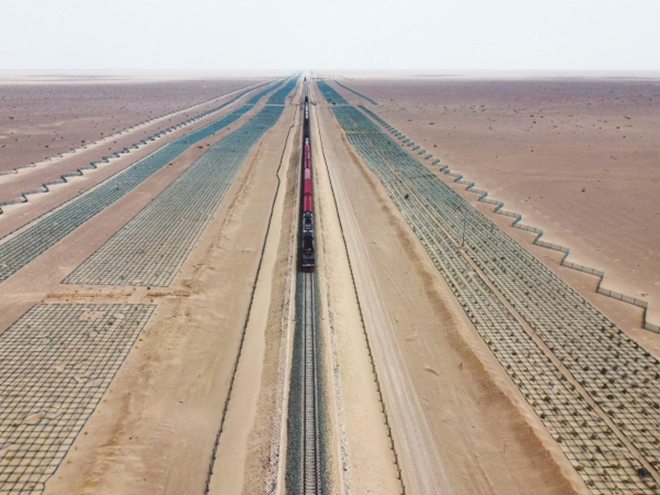
More than 95% of the Hami-Ejina Railway, which connects Xinjiang and Inner Mongolia, passes through the desert Gobi area, causing severe sand damage. Since its opening to traffic in 2015, the Ejina Operation and Maintenance Section of the Transportation Management Company of China Railway Electrification Engineering Group Co,.Ltd., which participated in the maintenance of the railway, has adopted a combination of physical and biological sand control. In the past eight years, it has built and maintained 3.16 million square meters of sand-fixing geogrid, 351 kilometers of sand-blocking high sand barriers, and planted over 1.2 million shrubs. Laying 108 kilometers of pipelines, 1,068,000 meters of drip irrigation pipes, and adopting time-sharing and zoning irrigation methods to ensure the survival of Haloxylon ammodendron trees. The comprehensive system of sand prevention and control of the Hami-Ejina Railway has been gradually formed, and the sand damage of the line has been basically curbed. In 2018, there were 121 kilometers of sand damage speed limit sections, all of which have been restored to average speed. The picture shows a freight train on the Hami-Ejina Railway on June 22.